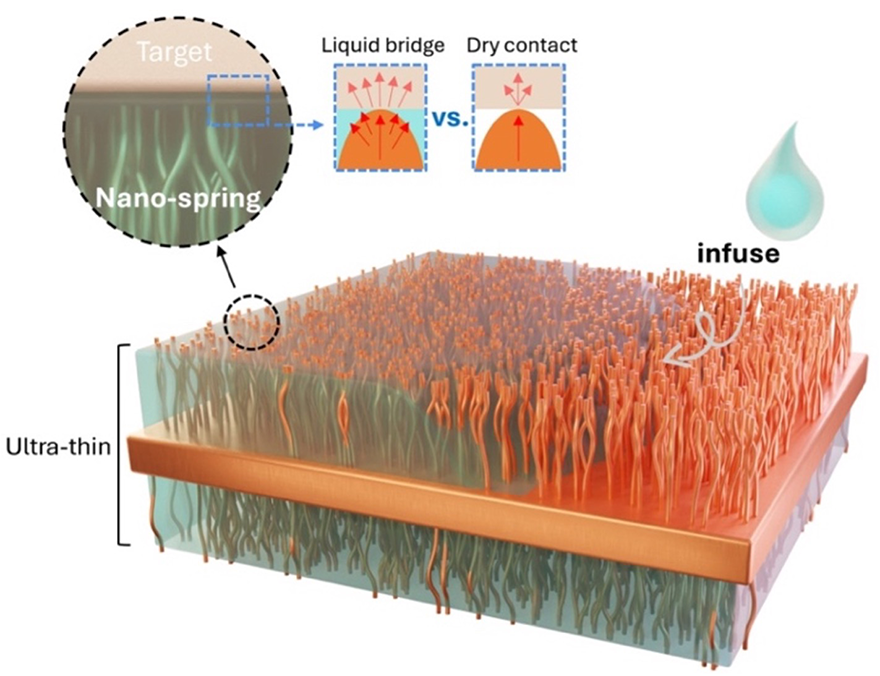Slashing AI data center cooling cost, GPU/CPU power use
Novel thermal interface material cools chips better than existing state-of-the-art solutions.
The AI revolution has ushered in an era of exponential power and energy consumption. According to the US Department of Energy, energy consumed by AI data centers could triple by 2028. Today, up to 40% of data center power use comes from cooling high-power chips—an astounding amount equivalent to the state of California’s entire electricity consumption.
To combat this, Sheng Shen, professor of mechanical engineering at Carnegie Mellon University, has developed an innovative thermal interface material (TIM) that outperforms existing state-of-the-art solutions. His design, now published in Nature Communications, achieves ultra-low thermal resistance while increasing cooling efficiency via improved heat dissipation. It also proves to be highly reliable.
While an immediate need is cooling data centers, this innovation can break through in industries that have been stuck using outdated thermal interface materials.
Sheng Shen, Professor, Mechanical Engineering
“The material is like a bridge between the nano- and macroscopic worlds,” explained Zexiao Wang, Ph.D. candidate in Shen’s lab. “Because the nanoscale material can be created using macroscale approaches, we can see with our own eyes the impact of the material on the world.”
Not only is Shen’s thermal interface material the best-performing on the market, it is also highly reliable. The team tested the material at extreme temperature ranges from -55 to 125 degree Celsius for more than 1,000 cycles, and the material showed no performance degradation.

Source: College of Engineering
Novel thermal interface material designed by Sheng Shen.
“This material solves a lot of existing challenges, and is ready to be used today,” said Shen. “While an immediate need is focused on cooling data centers, the application for this innovation is extensive. It can break through in industries that have been stuck using outdated thermal interface materials. It can be used for pre-packaging, reworked when using non-adhesives, and enables thermal bonding of two substrates at room temperature.”
“Oftentimes work at the nanoscale is foundational for a device that we might not see for decades,” said Qixian Wang, Ph.D. candidate. “It’s been exciting to see the real-world impact our material can have today because it is so easy to use.”
“Our material will have great benefits to the field of AI computing,” said Rui Cheng, postdoc and innovation commercialization fellow of CMU and the lead author of the paper published in Nature Communications. “Beyond reducing energy consumption, we can make AI development more affordable, more renewable, and more reliable.”
This research was supported by the National Science Foundation and ARPA-E (Advanced Research Projects - Energy). Collaborators included Tianyi Chen and Ana V. Garcia-Caraveo from the Oregon State University, and Navid Kazem and Loren Russell from Arieca, Inc.
Sheng Shen and Rui Cheng are making this technology commercially available via their startup company, NovoLINC, Inc.
